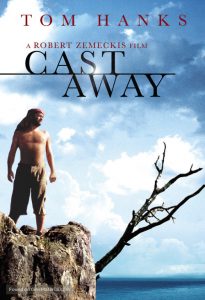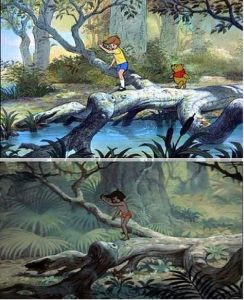
The Blueprint for Film
In the mid 20th century, German philosopher and sociologist Theodor Adorno expressed his concerns for society in a piece titled Dialectic of Enlightenment. He was worried that art, specifically the film industry, was becoming industrialized in the sense that it was increasingly being mass produced with the sole intention of generating profit for a corporation. Modern film, he argued, all followed a similar blueprint, with the only variation being the context in which the film’s conflict takes place. In the 60 some years since Adorno laid out these ideas, the mass production of art has only become more prevalent. The vast majority of the world’s films are produced by a select few companies, and, just as Adorno was beginning to fear in the 1950s, this mass produced art has become increasingly the same.
However, these similarities do not necessarily hold themselves to be self evident. On the surface, films appear to vary significantly, featuring different casts, plots, and falling under different genres. However when one delves deeper, the similarities in film become more and more obvious. To begin with, nearly all films are produced en-masse by the corporations of the culture industry. The prime motivating factor for these companies to produce film is to generate a monetary profit. To do so, they must be able to produce a large quantity of films efficiently, and the easiest way to do that is to follow a blueprint of sorts for each film. Let us look to the following example.
One would not think to group together animated children’s movies and survivalist dramas, but upon closer inspection, one finds that they are, in essence, the same. Take Dreamwork’s Madagascar, an animated children’s film released in 2005. The film begins by introducing its main characters, in this instance there a four. Melman, Gloria, Alex, and Marty, all talking zoo animals, live in the Central Park Zoo and lead comfortable lives. This status quo is interrupted when the four animals try to escape the zoo for a night on the town, only to end up being placed on a cargo ship enroute to a game reserve in Africa after their escape deems them unfit for captivity. While underway, the cargo ship makes a sharp turn and the crates carrying the four former zoo animals topple overboard and wash up on the shores of Madagascar. After being uprooted from their homes and stranded in a completely foreign environment, the group faces a variety of challenges. These include both internal conflict (Alex and Marty have a falling out) and external conflict (the group faces threats from the dominant predators on the island, the Fossas). Ultimately, the group settles the their differences and defeats the Fossas to bring peace to the island. The final scene shows the four zoo animals boarding a ship to return to New York, only to realize that the ship is out of gas in the final frame, leaving one last unresolved conflict.

Now lets compare this to the movie Cast Away, the academy award winning survival drama released in 2000. The movie starts by introducing the main character Chuck who also leads a comfortable, albeit demanding, life working as a Fed-Ex executive. On a business flight to Malaysia, Chuck’s plane flies through a storm and ends up making a crash landing in the Pacific Ocean. Chuck is the sole survivor and washes up on an uninhabited island in the South Pacific. There he battles both the elements and himself, as struggles to come to terms with the loss of his former life and has to adapt quickly to survive in his harsh new environment. Ultimately, Chuck decides to leave the island, building a raft which he sails into the open ocean. After some time he is picked up by a passing ship that eventually delivers him home to his family. He struggles to readjust to normal life as he realizes those he loved have changed significantly, and the last scene shows him at a crossroads, pondering his next decision.

From this we can see that despite the outward appearance of being different, these films carry remarkable similarities. The characters are introduced in an environment where they are comfortable and then quickly whisked away to a unfamiliar place by means of accident and force of nature. There they struggle to survive initially but once they resolve their inner conflict and overcome their external challenges they are able to return to their normal world. The final shots of both films reveal a final conflict that leaves the audience with an air of mystery on how the situation finally plays out. This blueprint holds true to nearly all modern film, with the differences added in only to appease the target audience. For example children’s movies like Madagascar will feature animated characters rather than flesh and blood actors, as well as a large amount of song and dance that won’t be found in films with adult audiences. Action movies will feature a gratuitous amount of physical violence and, nearly always, high speed vehicles of one sort or another. For dramas like Cast Away producers will add in a romantic element and delve deeper in the the main character’s emotional struggles. These differences aside, nearly all films are built on the same framework.

This brings us back to Adorno’s original claim, when culture is mass produced, all art is in danger of becoming the same. The culture industry that is prevalent in our society today mass produces film and as we have just determined, that film is becoming more and more the same. We find ourselves in a culture where film is produced by corporations rather than artists. Rather than produce art, these corporations fabricate films using a blueprint that is shared by the entire industry, adding in slight differences only to cater to different audiences. This detracts from films that are truly art, ones that convey actual human emotions and experiences. However instead of dismissing all film as mass produced propaganda, we should be more aware of the films we choose to watch. Moviegoers should be able to distinguish between mass produced Hollywood entertainment and the unique films that truly carry artistic significance. With this in mind, viewers will be able to decide between film that is purely entertainment, and film that carries actual meaning. And if they watch enough of both, they might just come to find that one type is far more fulfilling than the other.
Bibliography
Theodor W. Adorno. “The Culture Industry: Enlightenment as Mass Deception.” Dialectic of Enlightenment, Stanford University Press, 2002, pages 94–136.
http://www.moviepostersusa.com/madagascar-movie-poster-p671.html
https://www.pinterest.com/pin/302796774928947716/